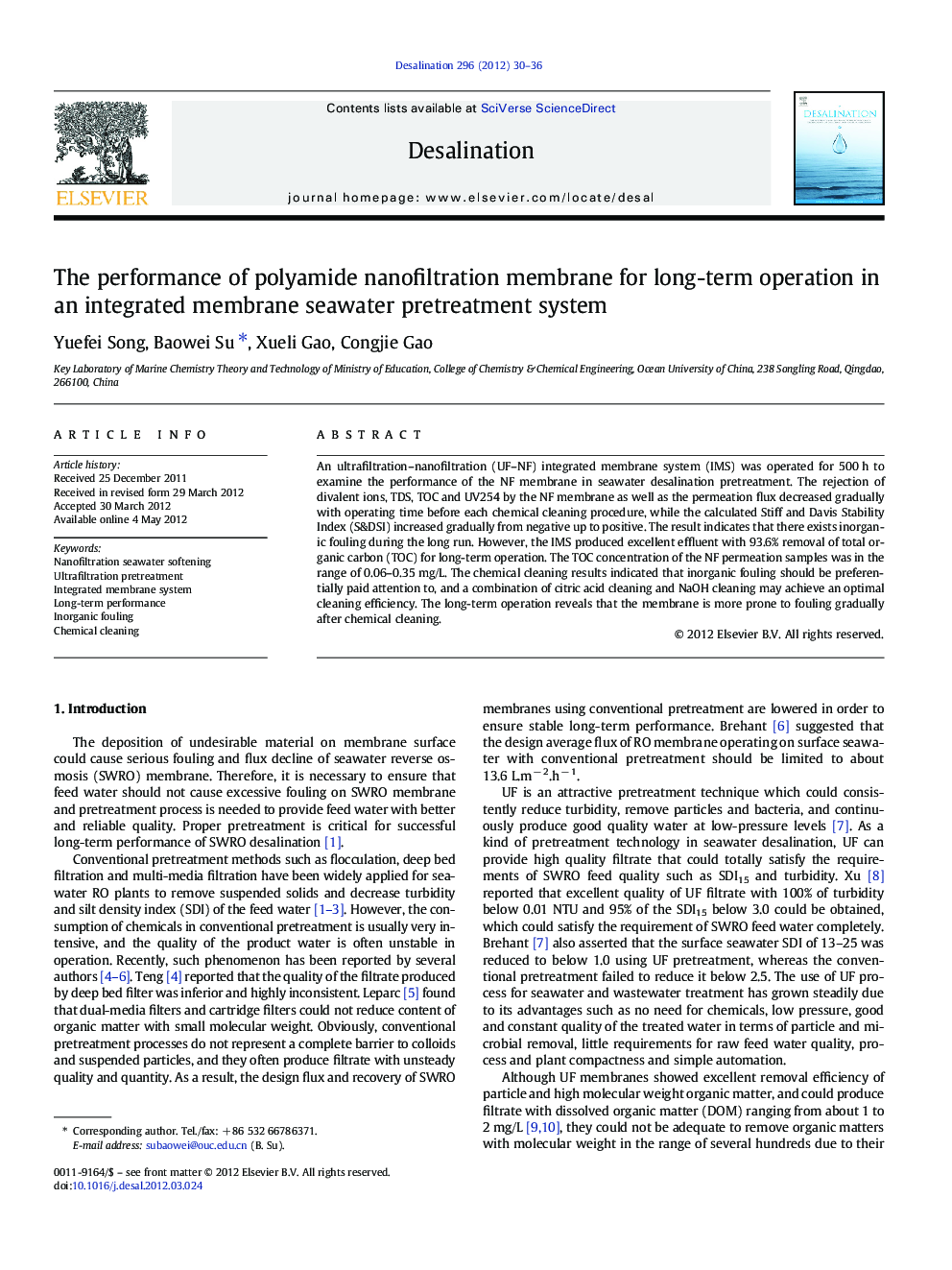| Article ID | Journal | Published Year | Pages | File Type |
|---|---|---|---|---|
| 624329 | Desalination | 2012 | 7 Pages |
An ultrafiltration–nanofiltration (UF–NF) integrated membrane system (IMS) was operated for 500 h to examine the performance of the NF membrane in seawater desalination pretreatment. The rejection of divalent ions, TDS, TOC and UV254 by the NF membrane as well as the permeation flux decreased gradually with operating time before each chemical cleaning procedure, while the calculated Stiff and Davis Stability Index (S&DSI) increased gradually from negative up to positive. The result indicates that there exists inorganic fouling during the long run. However, the IMS produced excellent effluent with 93.6% removal of total organic carbon (TOC) for long-term operation. The TOC concentration of the NF permeation samples was in the range of 0.06–0.35 mg/L. The chemical cleaning results indicated that inorganic fouling should be preferentially paid attention to, and a combination of citric acid cleaning and NaOH cleaning may achieve an optimal cleaning efficiency. The long-term operation reveals that the membrane is more prone to fouling gradually after chemical cleaning.
► The UF–NF IMS system produced good-quality permeate for long-term operation. ► The separation performance of NF membrane gradually decreased during the long run. ► UV254 is a much cheaper and convenient method to indicate membrane fouling. ► The increase of S&DSI value up to positive indicates membrane inorganic fouling. ► A combination of NaOH and citric cleaning could achieve better cleaning efficiency.
